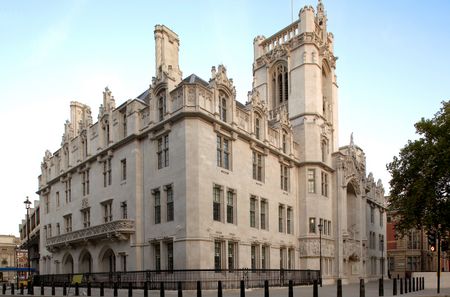Middlesex Guildhall
1913 establishments in EnglandArt Nouveau architecture in LondonArt Nouveau government buildingsCounty halls in EnglandCourt buildings in England ... and 13 more
Edwardian architecture in LondonGovernment buildings completed in 1913Grade II* listed buildings in the City of WestminsterHistory of local government in MiddlesexJudicial Committee of the Privy CouncilLegal buildings in LondonLocal government buildings in LondonNational government buildings in LondonNational supreme court buildingsParliament SquareSupreme Court of the United KingdomUse British English from April 2022Works by James Glen Sivewright Gibson

The Middlesex Guildhall is the home of the Supreme Court of the United Kingdom and of the Judicial Committee of the Privy Council. It stands on the south-west corner of Parliament Square in London. It is a Grade II* listed building.Constructed beginning in 1906 in what has been called "art nouveau gothic" style, initially the Guildhall served as an administrative and court centre for the County of Middlesex. It later served as a Crown Court building, until the establishment of the Supreme Court in the early 21st century.
Excerpt from the Wikipedia article Middlesex Guildhall (License: CC BY-SA 3.0, Authors, Images).Middlesex Guildhall
Parliament Square, City of Westminster Millbank
Geographical coordinates (GPS) Address Website External links Nearby Places Show on map
Geographical coordinates (GPS)
| Latitude | Longitude |
|---|---|
| N 51.500416666667 ° | E -0.128 ° |
Address
Supreme Court
Parliament Square
SW1P 3BD City of Westminster, Millbank
England, United Kingdom
Open on Google Maps










